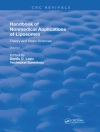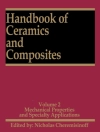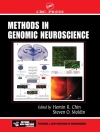At the heart of this book is the matter of how isotopic landscapes combined with data mining enriches insights on prehistoric migration and cultural transfer. Isotopic mapping is an indispensable tool for the assessment of mobility and trade in the past, but is limited by eco-geographic redundancies. An interdisciplinary research group focuses on the archaeological isotopic landscape of a reference region of outstanding importance, namely the transalpine migration route via the Brenner Pass which has been in use since the Mesolithic. Over the period of several cultural epochs, cremation was either the most common or exclusive burial custom practiced. For the first time, a systematic and large scale investigation of cremated remains was being conducted in the field of prehistoric migration research.
87Sr/
86Sr,
208Pb/
204Pb,
207Pb/
204Pb,
206Pb/
204Pb,
208Pb/
207Pb,
206Pb/
207Pb and – if applicable – also δ18O were measured in human and animal skeletal finds, an isotopic map was established, and innovative methods of data mining and similarity research have been applied to accomplish this novel approach to studying prehistoric migration and culture transfer. The book has interdisciplinary appeal and scholars working in bioarchaeology, physical anthropology and computer applications in life sciences will find it of particular interest.
विषयसूची
1 Transalpine mobility and trade since the Mesolithic (Lang, Metzner-Nebelsick, Sommer, Steidl): Concepts of mobility and migration; State of the art; Open questions (which can potentially be solved by isotopic mapping).- 2 The concept of isotopic landscapes and isotopic mapping in bioarchaeological research (Grupe, Hölzl, Mayr, Söllner): Isotopic landscapes; Approaches to isotopic mapping for archaeology; Aims and scopes of this project.- 3 Isotopic mapping by use of archaeofaunal assemblages (Peters): Advantages and prerequisites; Accompanying insights into archaeozoology (domestication, trade, subsistence economy).- 4 Validation of isotopic data in bioapatite of cremated and uncremated archaeological finds (Schmahl): Bioapatite and its high temperature modifications; Diagenesis of bioapatite; Sample decontamination and mineralogical characterization; Catalogue of quality criteria for stable isotope analysis of bioapatite.- 5 The isotopic fingerprint: New methods of data mining and similarity search (Kriegel, Kröger): Uncertain data and how to cope with them; Definition of similarity; Dependent and independent variables; Definition of individual place of origin and probabilities.- 6 Isotopic map of the Inn-Eisack-Etsch-Brenner passage (Söllner, Grupe, Kröger): Definition and establishment of archaeological isoscapes; comparison with modern Isoscapes; Calculation and definition of local cut-off values; Comparison of conventional maps with those generated by computer scientists.- 7 Current synthesis and future options (whole research group): Application of the map to uncremated and cremated finds, interpretive potential, World wide data sharing
लेखक के बारे में
Prof. Dr. Gisela Grupe is university professor at the biological faculty of the Ludwig-Maximilians-University in Munich and head of the research group „Physical Anthropology and Environmental History“. She is speaker of the Research Group “Transalpine Mobility and Culture Transfer” funded by the German Science Foundation, the work of which gave rise to this book. Until January 2015, she was simultaneously director of the anthropological department of the Bavarian State Collection of Anthropology and Palaeoanatomy in Munich. Her research focus concerns the microstructural organization and stable isotope analysis of archaeological skeletal finds including decomposition research for the scope of reconstructing individual and collective life-histories and the genesis of anthropogenic landscapes. She obtained her Ph D in Physical Anthropology in the year 1986, and her postdoctoral lecture qualification in the field of “Physical Anthropology and Environmental History” in the year 1990. Prior to becoming professor elected in Munich in the year 1991, she was research assistant in the archaeological and anthropological faculties at the University of Göttingen, followed by a Heisenberg Scholarship funded by the German Science Foundation. Being a member of several scientific associations, departmental political activities focused on the German Anthropological Society, where she was a member of the executive board for sixteen years including presidency. She was awarded the Rudolf-Martin-Award of the anthropological society in 1989, the Federal Cross of Merits of the Federal Republic of Germany in 2002, and the Bavarian Award for Academic Teaching in 2003.
Dr. Andrea Grigat is physical anthropologist and is currently employed as temporary maternity leave replacement curator at the anthropological department of the Bavarian State Collection of Anthropology and Palaeoanatomy in Munich. In parallel she offers anthropological services on a freelance basis. Prior to this she has been in charge of the Archaeo Bio Center at the LMU as executive secretary and scientific coordinator and subsequently as scientific and administrative coordinator of the Research Group “Transalpine Mobility and Culture Transfer” funded by the German Science Foundation. She finished her Ph D in physical anthropology in 2014 at the Ludwig Maximilians University in Munich. Her main research and working fields focus on the osteological analysis of human remains. Dr. Andrea Grigat is member of the German Anthropological Society.
George Mc Glynn is currently conservator and curator of the anthropological collections at the State Collection for Anthropology and Palaeoanatomy in Munich, Germany. He received his Ph D. at the Ludwig-Maximilians Universität in Munich with a focus on examining high altitude occupation in an alpine context. He previously worked as a freelance anthropologist for the City Archaeology in Hall in Tirol, Austria. His professional interests include bone pathology, analysis of cremated remains, Bronze Age burial practices in Mongolia, and the forensic application of osteology. He was member of the Society for Anthropology executive board in Germany for ten years and also its former president.












